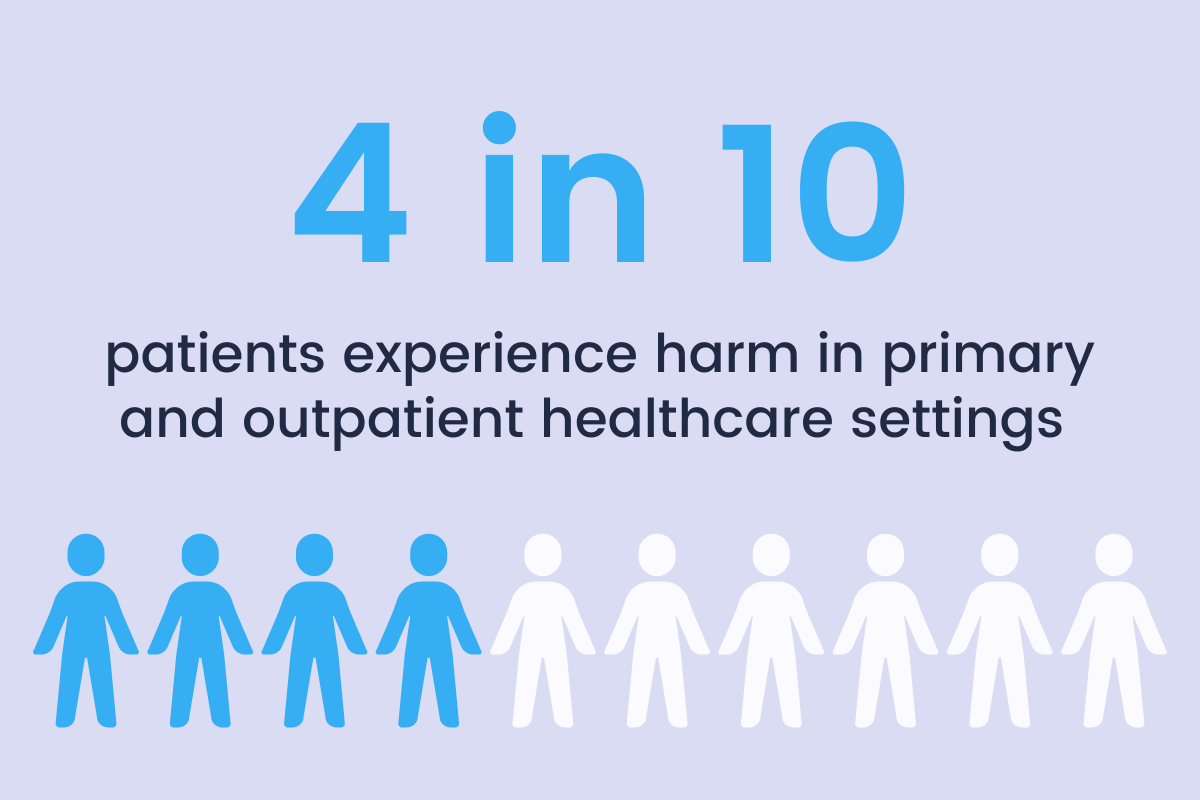3 min read
The Impact of Patient Safety on Healthcare Quality & Patient Outcomes
Performance Health Partners
November 13, 2024

In the intricate landscape of healthcare quality, the primary objective remains the provision of care that is not only safe and effective but also exemplifies the highest standards of excellence. Patient safety, the foundational pillar in this endeavor, includes all efforts to reduce harm, encompassing proactive prevention, timely detection, and effective mitigation of medical errors and adverse events.
Recognizing this, organizations must prioritize a comprehensive approach that goes beyond individual measures and promotes an overarching system of safeguards. A robust culture of safety within healthcare institutions is not only vital for patient well-being but also profoundly impacts healthcare quality and patient outcomes. Read on to further explore the connection.
The Impact of Patient Safety in Healthcare
Patient safety transcends mere ethical considerations; it stands as a fundamental cornerstone in healthcare, intimately impacting those who entrust their lives to medical providers.
Gaps in safety protocols and systemic inadequacies result in harm to millions of patients globally each year, inflicting considerable physical, emotional, and financial distress.
The World Health Organization reports that, worldwide, as many as 4 in 10 patients experience harm in primary and outpatient healthcare settings.
The most critical safety errors often revolve around diagnosis, prescription, and medication administration. However, it should be noted that a vast majority of these medical errors, as well as hospital acquired infections and adverse events are preventable, emphasizing the paramount importance of the prioritization of patient safety.
Below are additional benefits of cultivating a culture of safety.

Improved Patient Outcomes
Patient Safety isn’t just about maintaining the caliber of care; heightened safety practices directly correlate with enhanced health outcomes. Recognizing this intrinsic link, the healthcare community continually seeks avenues to fortify its commitment to safety, striving for the pinnacle of patient well-being
Central to patient safety initiatives is the prevention and mitigation of medical mishaps, which can range from misdiagnoses and medication errors to surgical oversights and communication breakdowns.
Medication errors notably impact patient safety by escalating both mortality and morbidity rates and exerting substantial economic pressures. The financial burden of caring for patients affected by medication-related errors is staggering, exceeding $40 billion annually.
Profound patient safety practices, including rigorous hand hygiene, advanced sterilization techniques, and stringent infection control, are crucial in preventing healthcare-associated infections. These infections can lead to prolonged patient recovery time, inflate healthcare expenses, and, in severe cases, result in fatalities. By prioritizing safety, healthcare facilities can significantly reduce the occurrence of these infections.
By implementing clear-cut patient safety goals and embracing standardized measures like checklists and innovative technology solutions, healthcare practitioners can drastically reduce safety events, and thus healthcare quality improvement.
Patient-Provider Trust and Communication
The World Health Organization emphasizes that the delivery of safe healthcare services is pivotal in fortifying the trust communities’ place in their healthcare systems.
By championing safety initiatives, healthcare organizations foster enhanced communication, leading to a transparent environment that engenders mutual trust. When patients trust their providers, they’re not only more likely to engage in candid dialogues but are also more inclined to share vital health details and adhere to recommended treatment regimens.
Central to the paradigm of patient safety is the concept of patient-centered care. Many safety protocols are intricately intertwined with the principle of patient-centeredness, emphasizing active patient engagement. Patients who actively participate in their care decisions and feel that their preferences are considered gain more confidence in their treatment.
Reduced Costs
The financial ramifications of patient harm weigh heavily on healthcare systems.
According to "BMJ Open", an estimated 15% of hospital expenditures are directly associated with the treatment of safety failures.
By preventing additional treatments, minimizing prolonged hospital admissions, and preventing potential legal repercussions related to these failures, healthcare organizations can optimize resource allocation. This not only streamlines operations but also alleviates financial strains on both patients and healthcare facilities.
Enhanced Outcomes & Continuous Quality Improvement
When patients are protected from harm through robust safety protocols, they experience fewer complications, infections, injuries, and adverse events. This directly translates into improved clinical outcomes, shorter hospital stays, and faster recovery times. The ultimate outcome? Patients achieve a heightened sense of overall health and well-being.
Proactively identifying gaps leading to errors and adverse events allows healthcare organizations to implement targeted patient safety interventions and refine processes to amplify overall care quality. This continuum of improvement positively influences healthcare quality and patient outcomes over time.
In this pursuit of excellence, incident reporting software emerges as an invaluable tool. It facilitates a structured and systematic approach to identifying, reporting, analyzing, and addressing adverse events, near-misses, and other patient safety concerns. It also empowers healthcare organizations to take control of and enhance their healthcare quality management.
At its core, the symbiotic relationship between patient safety, healthcare quality, and patient outcomes that forms the foundation of effective, compassionate, and successful healthcare delivery. By embracing patient safety as a core value and integrating it into every aspect of care, healthcare systems can improve quality, health outcomes, and overall patient experiences.



